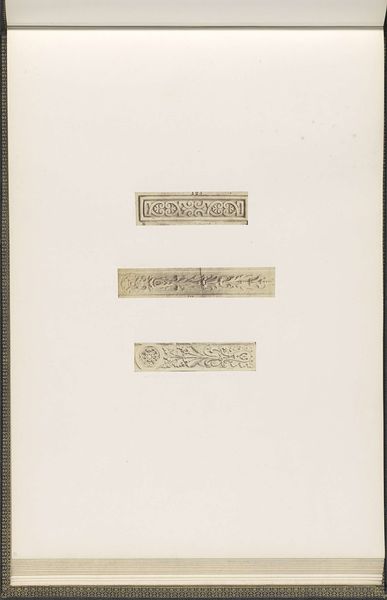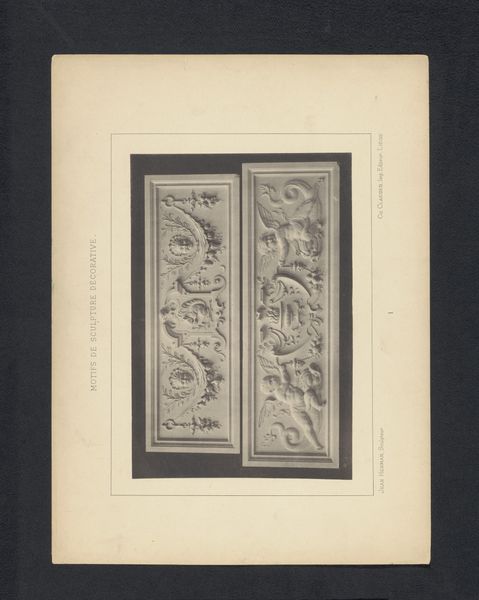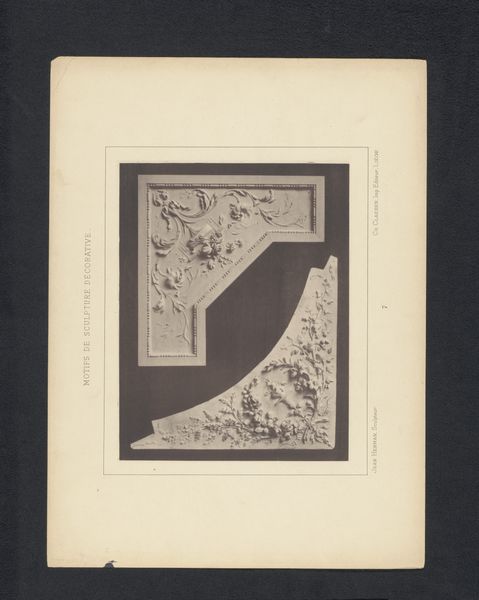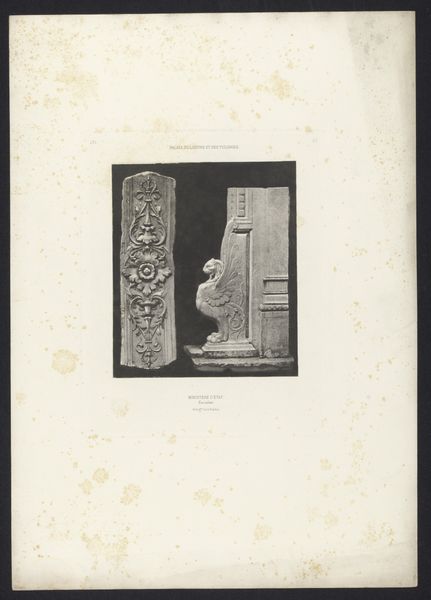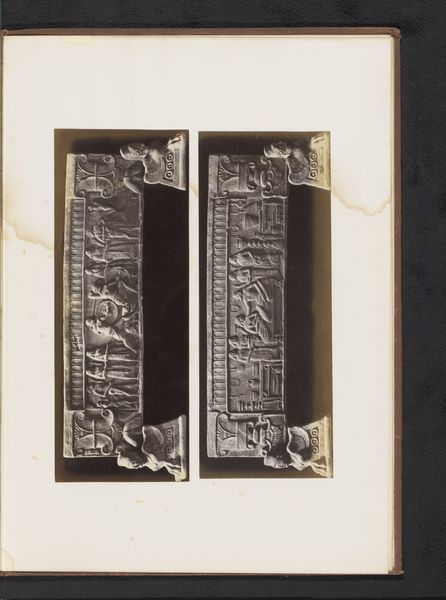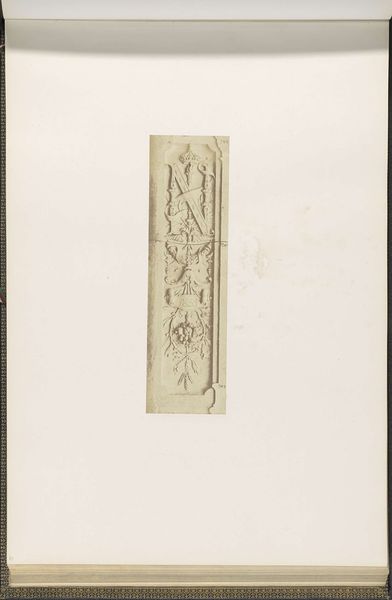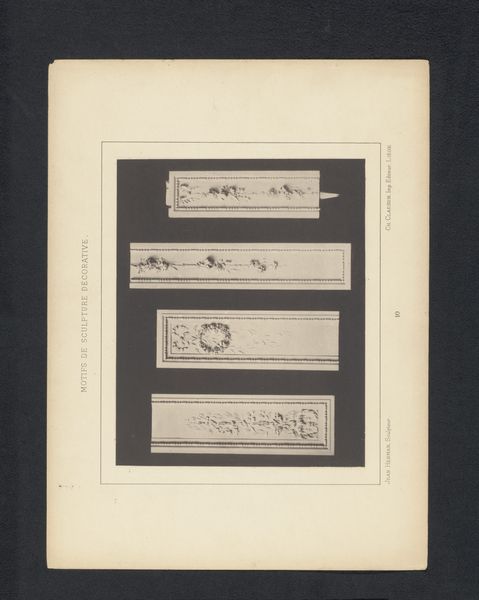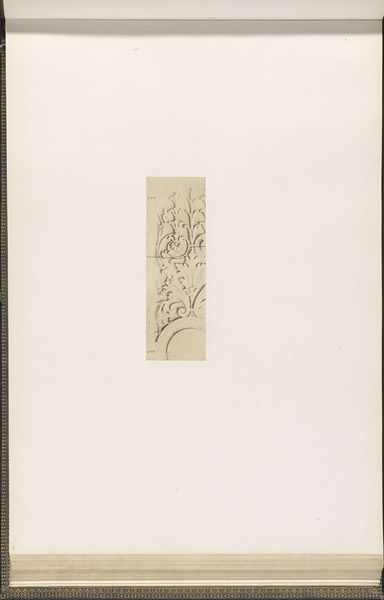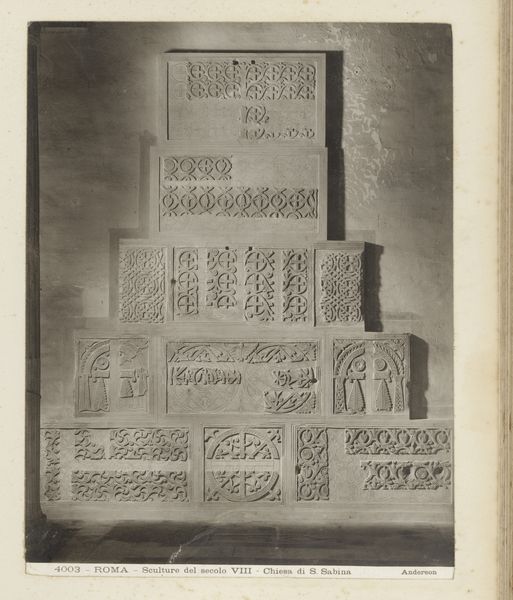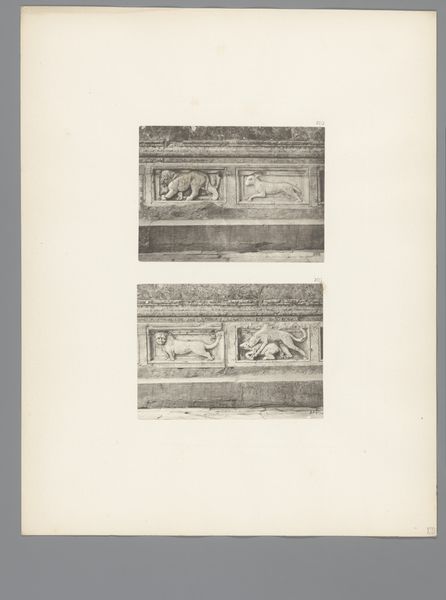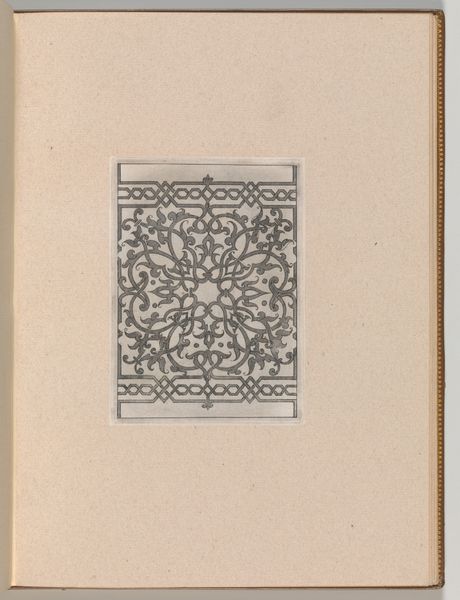
relief, sculpture, marble
#
relief
#
classical-realism
#
form
#
geometric
#
sculpture
#
embossed
#
line
#
academic-art
#
decorative-art
#
marble
Dimensions: height 186 mm, width 242 mm
Copyright: Rijks Museum: Open Domain
Editor: So, here we have “Three Reliefs with Foliage, sculpted by Jean Herman,” dating from before 1880. The material looks like marble. They strike me as incredibly ornate and decorative, like something you'd see adorning a grand building. How do you interpret these reliefs? Curator: These reliefs are more than just decorative; they are dense with symbolic meaning. Notice how the foliage isn't just random—it evokes classical motifs. Consider the enduring appeal of the acanthus leaf, for example. What emotions or ideas do those forms convey to you? Editor: Hmmm...abundance, perhaps? Maybe even a sense of cultivated elegance. Curator: Precisely! These symbols aren't accidental. The flowing, twisting vines can represent life's journey, growth, and transformation. It's fascinating how these visual symbols were meant to be understood universally by the educated elite of the time, carrying cultural memory forward. Does seeing that connection change your perception of their ornamental role? Editor: Definitely! It adds a layer of intellectual depth I hadn't considered. Knowing that it connects to classical ideals elevates its significance. Curator: The artist invites us to engage with enduring cultural values and to remember how visual language shapes our perception. Even a small fragment like this speaks volumes about the values of its time. Editor: I guess it shows that “decorative” doesn’t have to mean “shallow.” There's a whole visual language here. I’ll never look at foliage the same way again. Curator: Indeed. The iconographic reading connects the visible world with intangible human values. Art, in its symbolic expression, is how cultures communicate and remember.
Comments
No comments
Be the first to comment and join the conversation on the ultimate creative platform.
